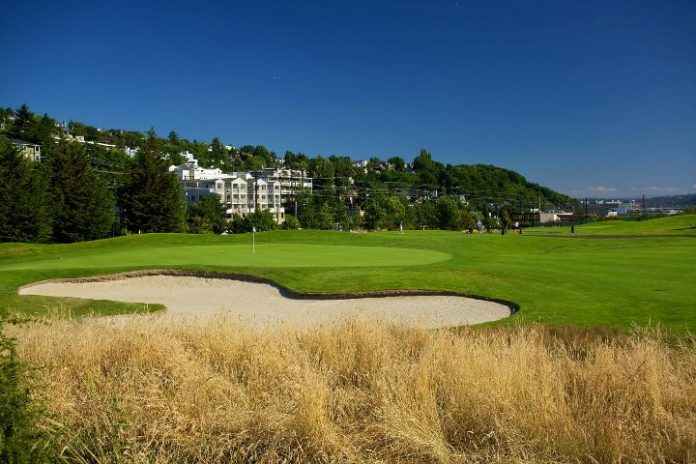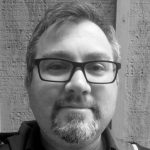Last week, The Seattle Times ran an article headlined, ‘Study questions ‘best use’ of golf courses Seattle operates’. The article stems from a report that the City commissioned in 2017. The report was apparently due a year ago, but was only recently released, as reported by Erica C. Barnett at the C is for Crank.
A number of candidates immediately jumped into the fray, including former councilmember Heidi Wills on her campaign facebook page. “The City is wasting time and money studying the best use of our city’s golf courses. These green jewels are our inheritance,” she opined.
Merely studying what the best use of rarely used 528 acres (11%) of Seattle’s city-owned open space — amidst an open space shortage, a housing crisis, and rapidly devolving climate situation— is a waste of time and money, Wills alleges. The city’s report is mostly full of fluff, seemingly tilted to elevate the importance and forthcoming increased usage of municipal golf into the future, in order to justify the large expenditures it will require in coming years. Unsurprisingly, the data indicates the opposite.
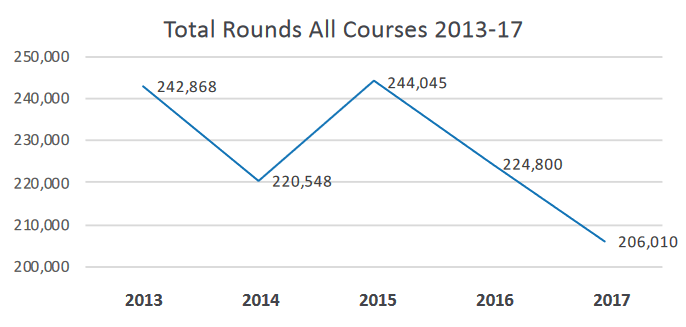
Golf’s Severe Lack of Diversity
The data shows a disturbing lack of diversity, heavily tilted toward men being the dominant user — no municipal course in 2016 saw more than 17% of users were female, and half saw as little as 10%. This isn’t really surprising, golf has long had a diversity problem, as well as a troubled history of misogyny. Also worth noting, according to the report, nearly 70% of players stated they don’t actually play most of their golf in Seattle. The report doesn’t have any data on racial diversity of users, but notes that until the 1960s, minority golfers faced significant discrimination.
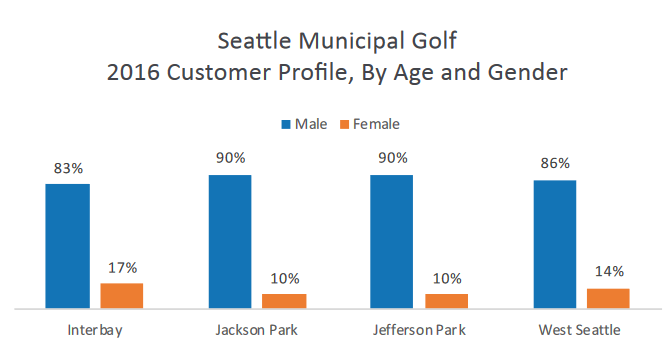
According to United States Golf Association, “From 1934 to 1961, the Caucasian-only clause was a part of The PGA of America’s by-laws that prevented non-whites from membership, and from competing on the PGA Tour.” In 1999, the Newstateman, in an article titled ‘No Jews on their golf courses’, wrote, “For miles along the Florida coastline, from Miami to Palm Beach, there are tangible signs of Jewish philanthropy tucked alongside clubs that still have partial or complete bans on Jewish members.” Oddly, while there is a section on history, virtually none of this is mentioned.
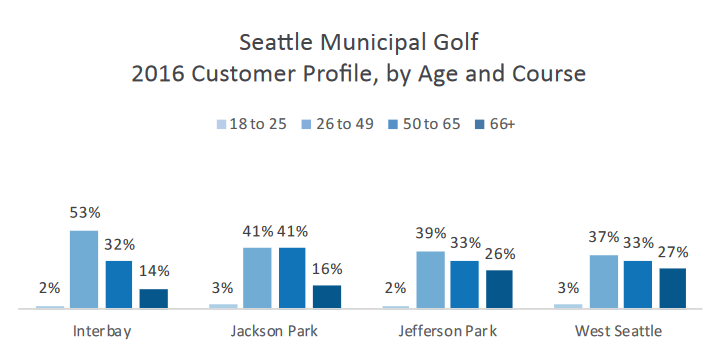
Despite claims that high school golf teams are a top user, in 2017, only 1.3% of rounds by high school golfers were logged: 2,703 out of 206,010 rounds. In 2016, rounds played by those 18-25 years old, were less than 3% of total rounds.
Seattle’s Golf Courses are Bleeding Money and Customers
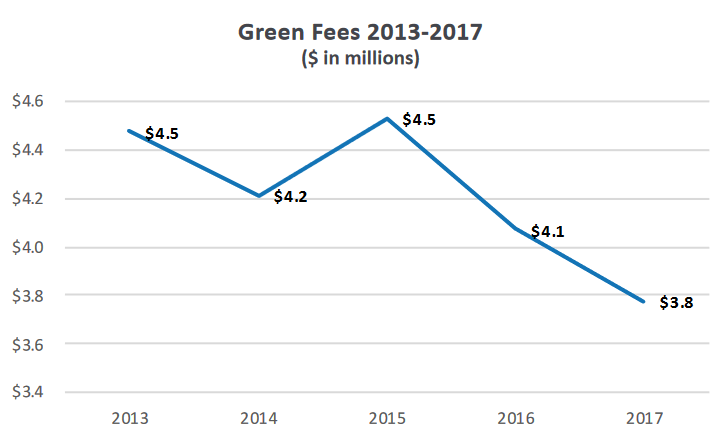
All of the golf programs are bleeding money. Green fees are falling like a rock (16% in just two years). Operational costs are increasing. And there is a long laundry list of outstanding maintenance and facility upgrades that will push the golf programs millions of dollars into the red in coming years.
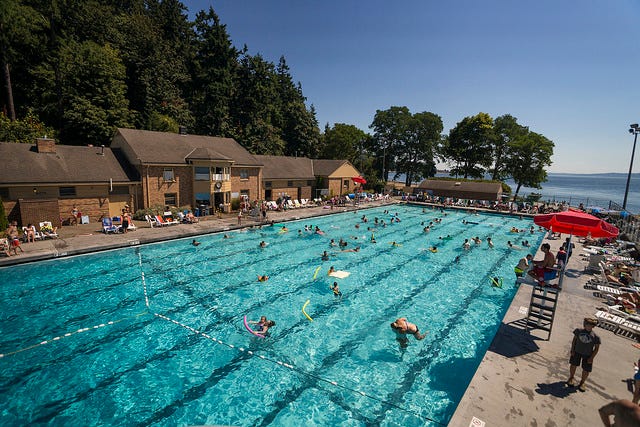
Utility costs will not be declining, and the report states, “SPU fees have increased an average of 6% a year since 2010.” The report doesn’t state how many CCF of potable water are used by the courses, but gives a cost of $520,000 for Interbay Golf Center. Backing out the cost from Seattle Public Utility’s rates, that looks to be about 60 million gallons of water. This is on top of the 37.5 inches of rain Seattle gets in an average year. How much water is 60 million gallons? The Colman Pool in West Seattle (pictured above) is roughly 500,000 gallons. It would be like filling it up, and emptying it out, 120 times — most of that occurring in summer and the shoulder seasons. Sixty million gallons is the United Nations-recommended amount of water for 12,500 people for an entire year. Interbay is only a nine-hole course!
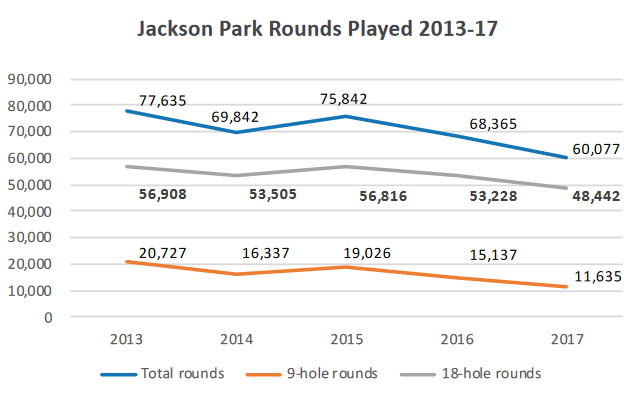
In 2000, Seattle had 564,109 residents, and 280,000 rounds of golf were played on municipal courses. In 2017, the number of rounds dropped to 206,010 while population skyrocketed to 725,000. The report claims that between 2015 and 2017, there was a 16% drop in rounds played — however, this doesn’t take into consideration our population boom. When adjusting for population, golf saw a 43% decline between 2000 and 2017. That is a tremendous drop in less than a generation, and it likely isn’t going to change.
Climate Change Implications
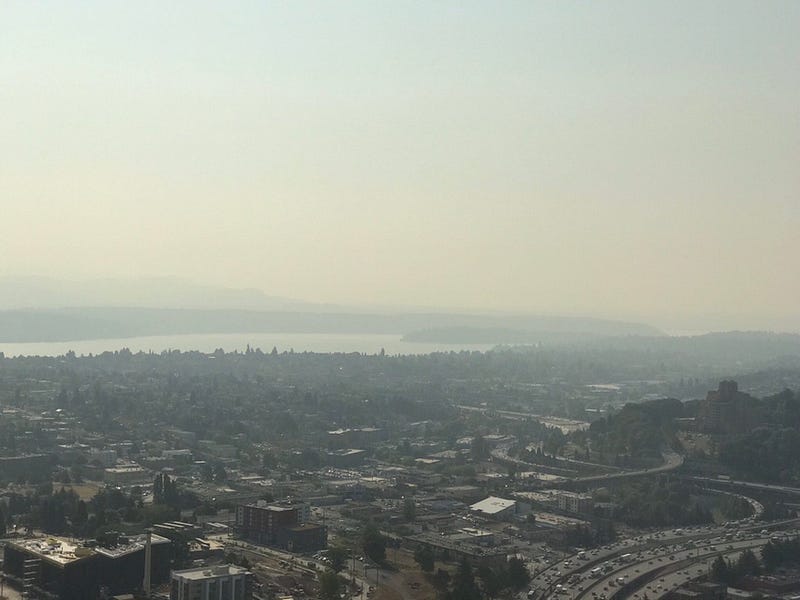
Climate change is already affecting golf in Seattle. Wildfire smoke the last two years had a significant effect on the number of rounds played. That isn’t likely to change as the region gets warmer, and trees continue to die. How many rounds do you think will be played in summer when the western slopes of the Cascades start burning? It isn’t even summer yet, and wildfires have already begun to affect air quality in the region. Then there is the heat — Seattle’s heat wave last July will also not likely be an anomaly, affecting the ability of people to play golf in the summer. Changing rain patterns that see larger and more violent downpours and flooding, will also have an effect on course conditions.
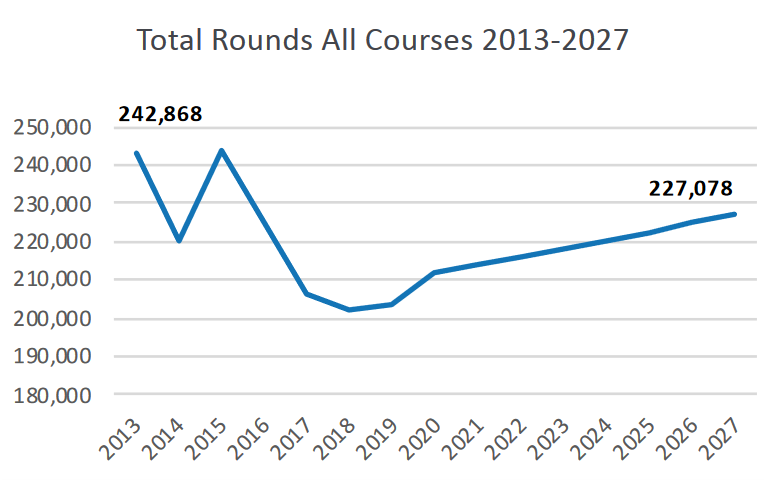
Oddly, despite all of this data, the report optimistically predicts this will be the year things turn around for golf. And then a dramatic leap, followed by continued increases in usage. Literally nothing in the report points to this happening. Seattle has gotten wealthier, younger, denser — and golf is not thriving. This graph, by the way, is reminiscent of the Washington State Department of Transportation (WSDOT) traffic projections.
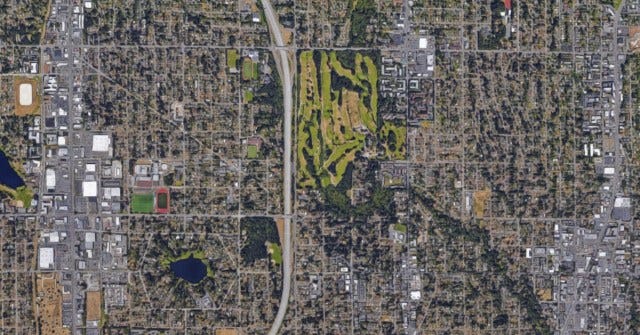
On the question of what the golf courses should become, should they change, I have mixed feelings. Unfortunately, all of our municipal golf courses will be relatively, if not directly, adjacent to future light rail stations. Jackson Park Golf Course will have two adjacent stations. Given our compounding housing and climate crises, we should be planning for something other than golf courses. We could add ecodistricts with tens of thousands of homes directly adjacent to transit, while preserving over half of this acreage as open space and parks, ones that wouldn’t require payment in order to access, or toxic chemicals and a ridiculous amount of water to maintain. As we densify, we also have an open space shortage (and massive disparity) that will only be possible to address by removing cars from public right of ways.
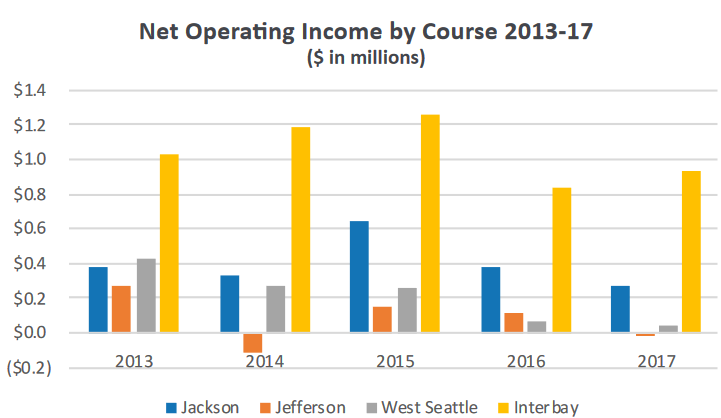
That being said, three spots seem worth highlighting in this report. Interbay Golf Center is the least worst, financially. Restaurant revenue is up. Driving ranges are popular, seeing a 40% increase in revenues in just a few years. What does this mean? People want to eat and drink in parks! But it also means driving ranges are great — unlike golf courses, ranges don’t take up much space, can be urbanized, aren’t an environmental nightmare, and they’re economically accessible to a greater swath of population from beginner to expert. I didn’t learn to play golf on a course, I spent months on a driving range and pitching green. We could re-purpose the golf courses, increase the number of driving ranges, and expand access to open space for much more of the city.
Golf. Is. Dying.
CityLab reported on this very issue last year. This is not unique to Seattle, nor the US, but a global phenomenon. Much like climate change, this change is abrupt and drastic. We should be reacting to that change, not sticking our heads in the sand to preserve a floundering and inequitable status quo. Determining whether or not municipal golf courses are the ‘best use’ of public land — especially as they continue to bleed financial and water resources—is absolutely something that should be studied. It would be financially imprudent, and environmentally irresponsible, not to.
This is a cross-post from Mike Eliason’s blog on Medium.
Mike is the founder of Larch Lab, an architecture and urbanism think and do tank focusing on prefabricated, decarbonized, climate-adaptive, low-energy urban buildings; sustainable mobility; livable ecodistricts. He is also a dad, writer, and researcher with a passion for passivhaus buildings, baugruppen, social housing, livable cities, and car-free streets. After living in Freiburg, Mike spent 15 years raising his family - nearly car-free, in Fremont. After a brief sojourn to study mass timber buildings in Bayern, he has returned to jumpstart a baugruppe movement and help build a more sustainable, equitable, and livable Seattle. Ohne autos.


